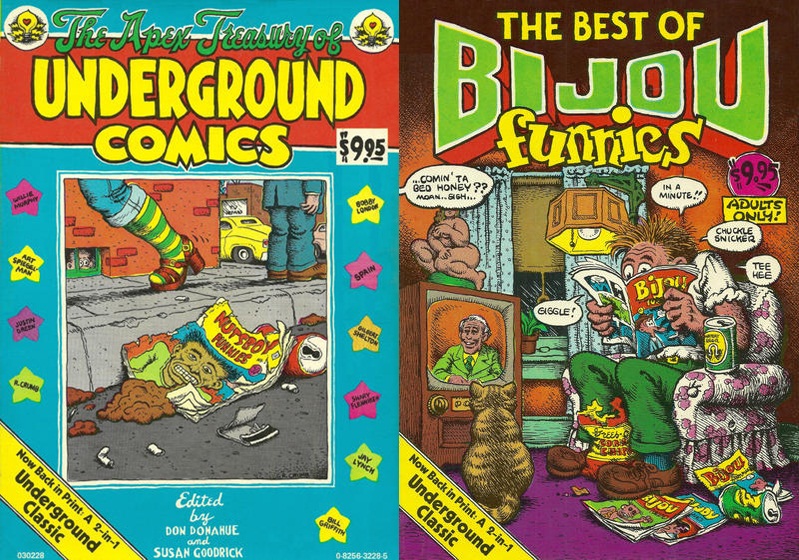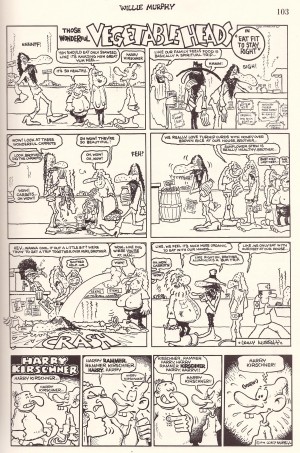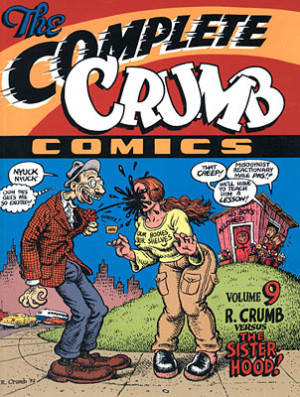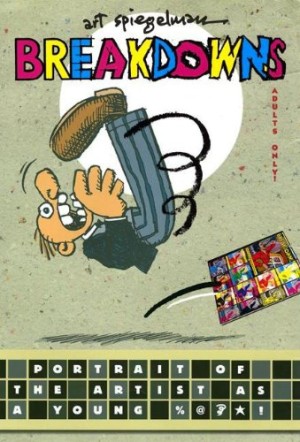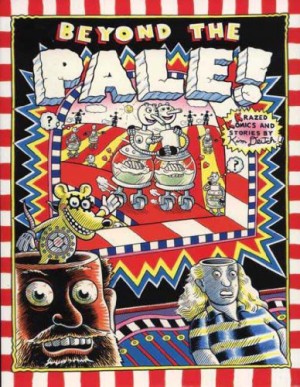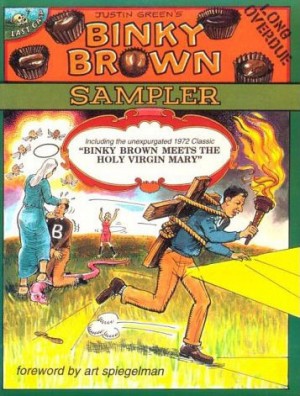Review by Ian Keogh
The Best of Bijou Funnies anthologised a single anthology series when originally published in 1975, and a year earlier The Apex Treasury of Underground Comics saw editors Don Donahue and Susan Goodrick select their work from far and wide. The more commonly known format, however, is 1981’s flip book pairing of the content. What surprises is how little crossover there is. Donahue and Goodrick separate their work by creator, prefacing each section with biographical material and relevant quotes, while Jay Lynch’s anthology is a more random presentation of the Bijou Funnies series he edited. His introductory material is complete with many photographs.
Despite their cultural importance, Underground comix have been only haphazardly reprinted in book form. The Complete Crumb Comics is the gold standard, and books compiling the work of Kim Deitch, Justin Green, Spain Rodriguez, Gilbert Shelton and Art Spiegleman can be found, but those inspired to create in the late 1960s and early 1970s were ranged far and wide. It means this collection retains an importance not just as a snapshot of a fertile period of creative originality, but for presenting the accomplishments of worthies little seen elsewhere. This ranges from the sheer demented outsider work of Rory Hayes and his ‘Granny Crackbaggy’ strip to the equally demented, but kinetic police thriller madness of James Osborne.
The little known is possibly best represented by Willy Murphy (sample page), who’s barely remembered, but exceptionally good. His material is pithy slice of life commentary not too far removed from the traditional newspaper gag strip in approach, as his expressively drawn bigfoot cast work toward a last panel punchline, but his character designs are bizarrely quirky. Yet ‘Treasury’ is an accurate description for the full package as the 1930s influenced work of Shary Flenniken and Bobby London impresses, and so does the wild cartooning of Evert Geradts, which is better than his plots. Despite this he’d successfully transfer to mainstream comics with greater success than anyone else presented here other than Spiegelman. Much remains to be discovered by the curious, such as Justin Green’s Little Lulu pastiche, the evolution of Skip Williamson, and for those who haven’t seen it elsewhere Spiegelman’s mythical first attempt at Maus, in three pages. Also of note are a couple of jam pages, a vanished underground staple where a number of creators combine on the same story.
Some creators located their style and voice early and stuck with it through thick and thin over the decades (Deitch, Rodriguez, Shelton) while the progression of others is apparent even in this brief time frame (Crumb, Green, Spiegelman). Jay Kinney would later be revered as a sympathetic editor of syndicated strips, and while there’s a variety to his contributions, largely commenting on middle class hypocrisy, he was never cut out to be an underground great. Lynch is featured in both sections, mainly through his knockabout coupling Nard n’ Pat, but he’s also somewhat the lost talent as displayed by his visual experimentation and work such as ‘Child Martyr’ an appalling morality tale imposed on young catholic children.
Honest snapshots of an era refuse to conform to ideology, and for all the ground breaking work in terms of pushing the comics medium forward, there is offensive content. Racist caricatures, poor attitudes toward women and unenlightened comments about same sex relationships can be found, with Crumb a primary offender. The sexual content was always intended as provocative, but some aspects now shock more than intended at the time, particularly with regard to underage sex.
Curious about those Underground comics you’ve heard about? There’s no better place to start than here.
